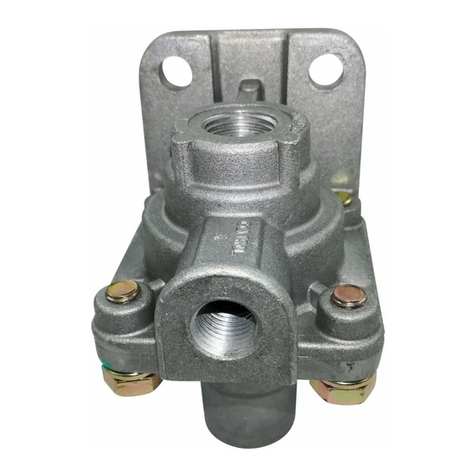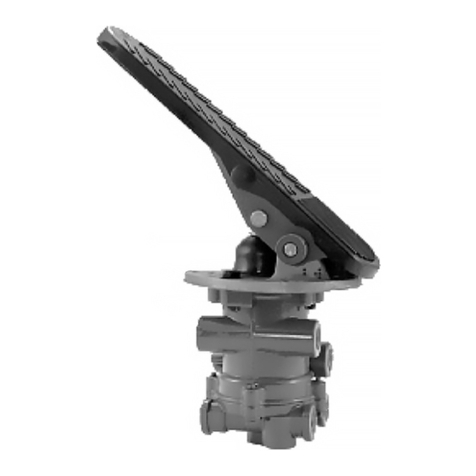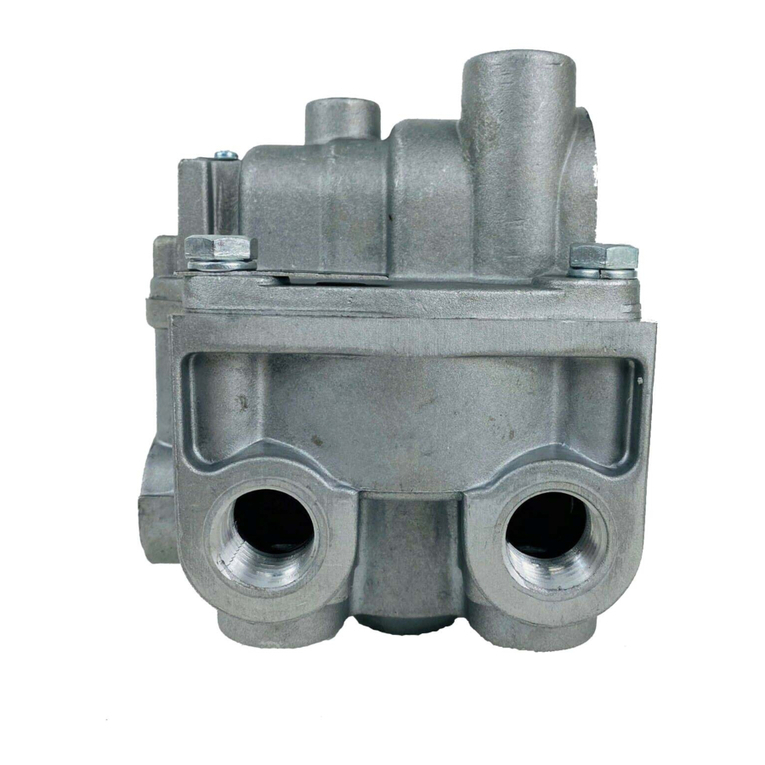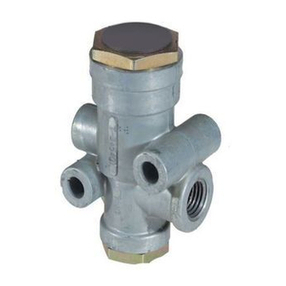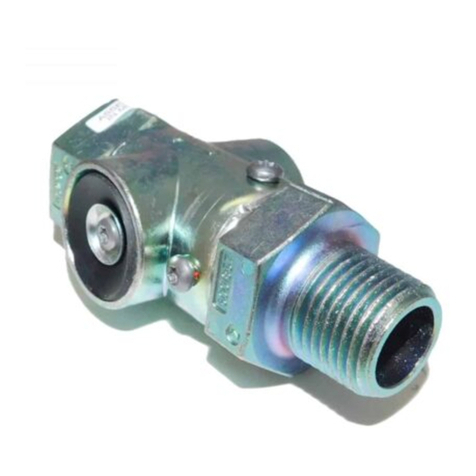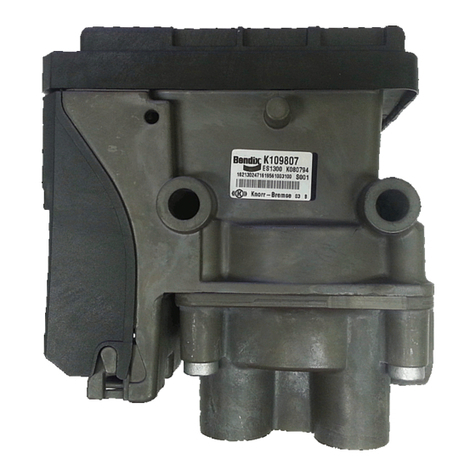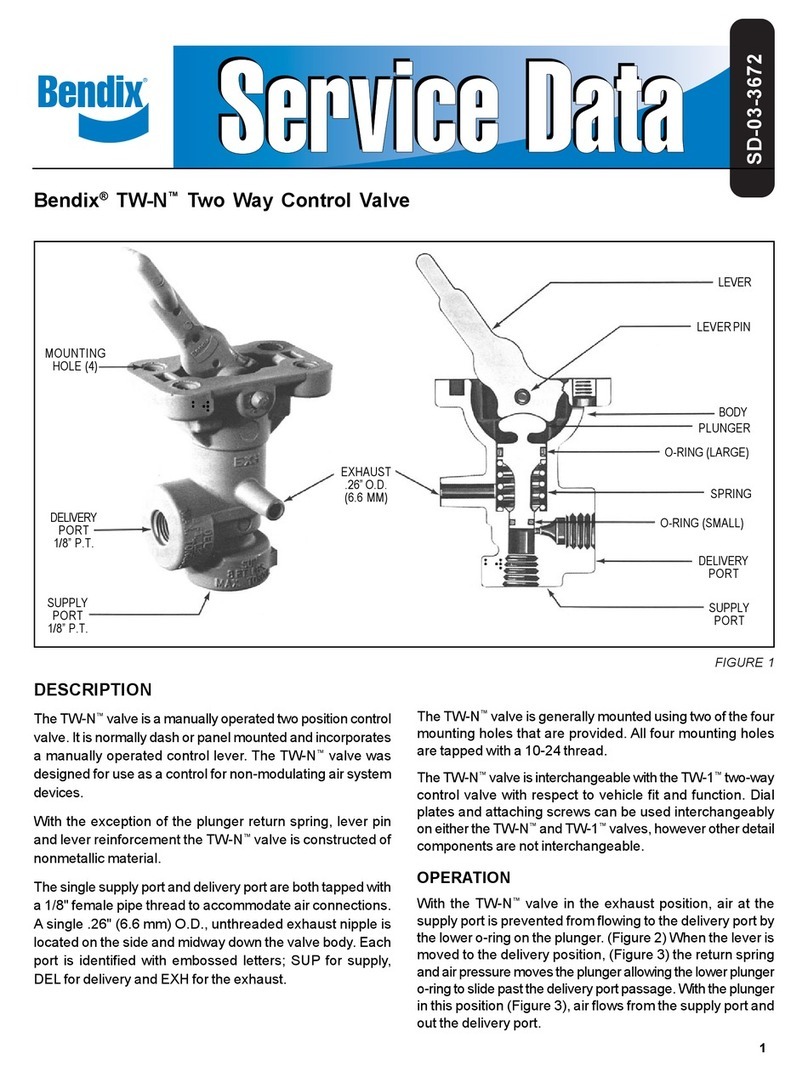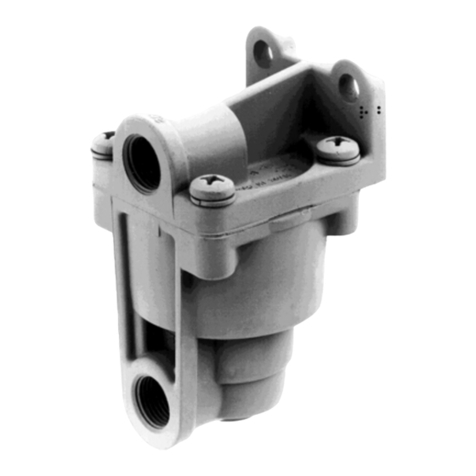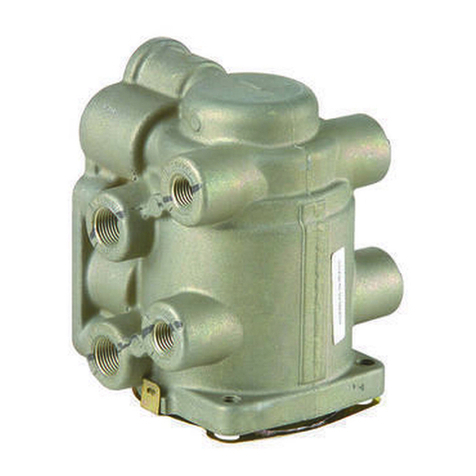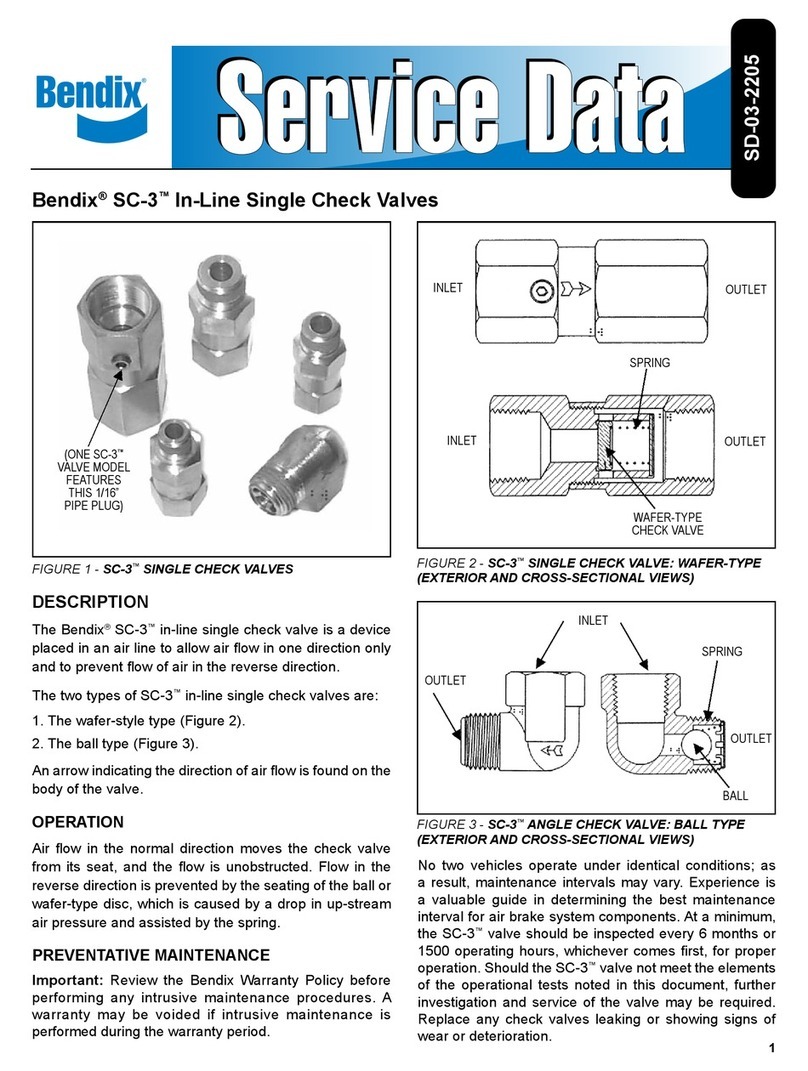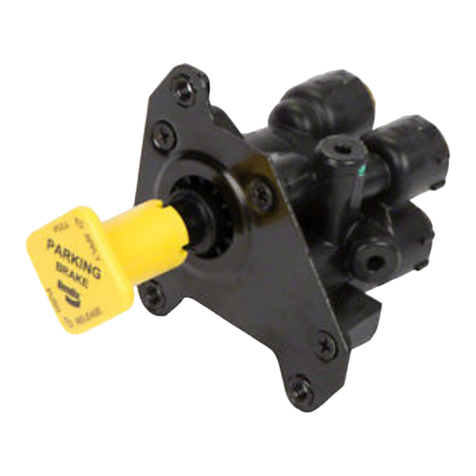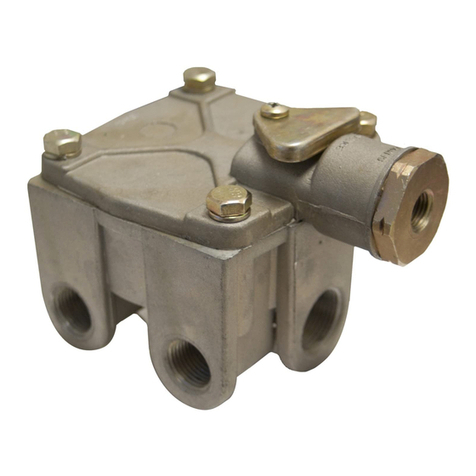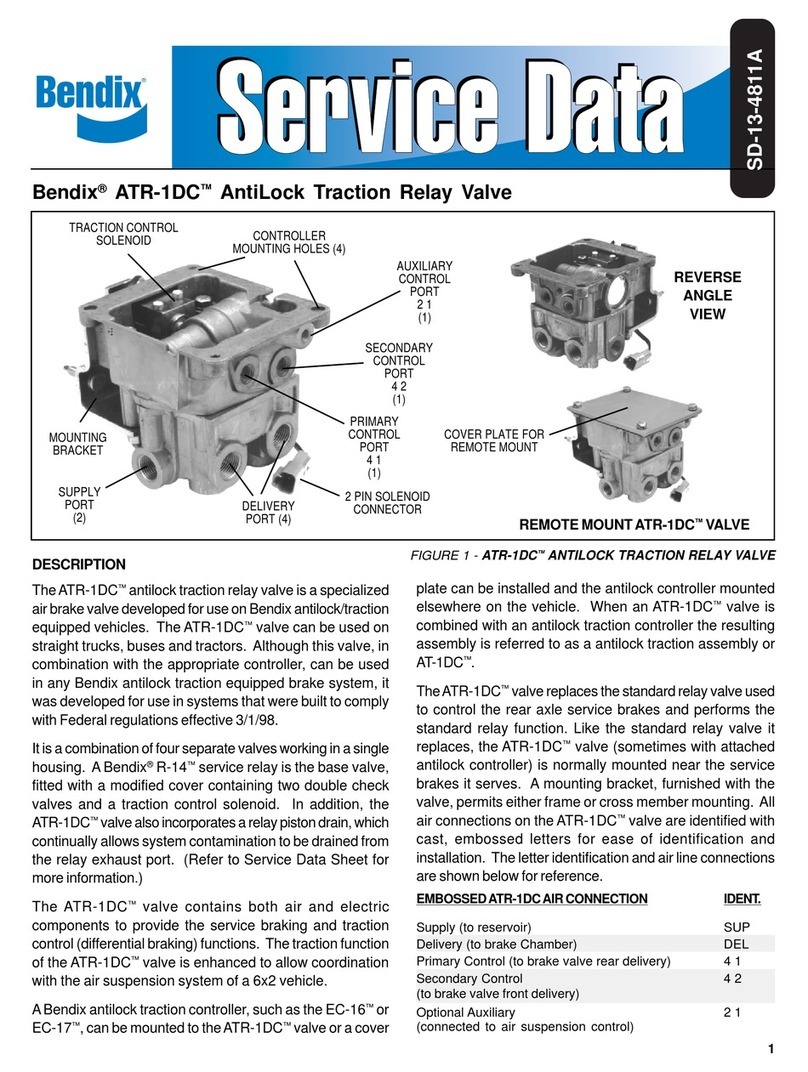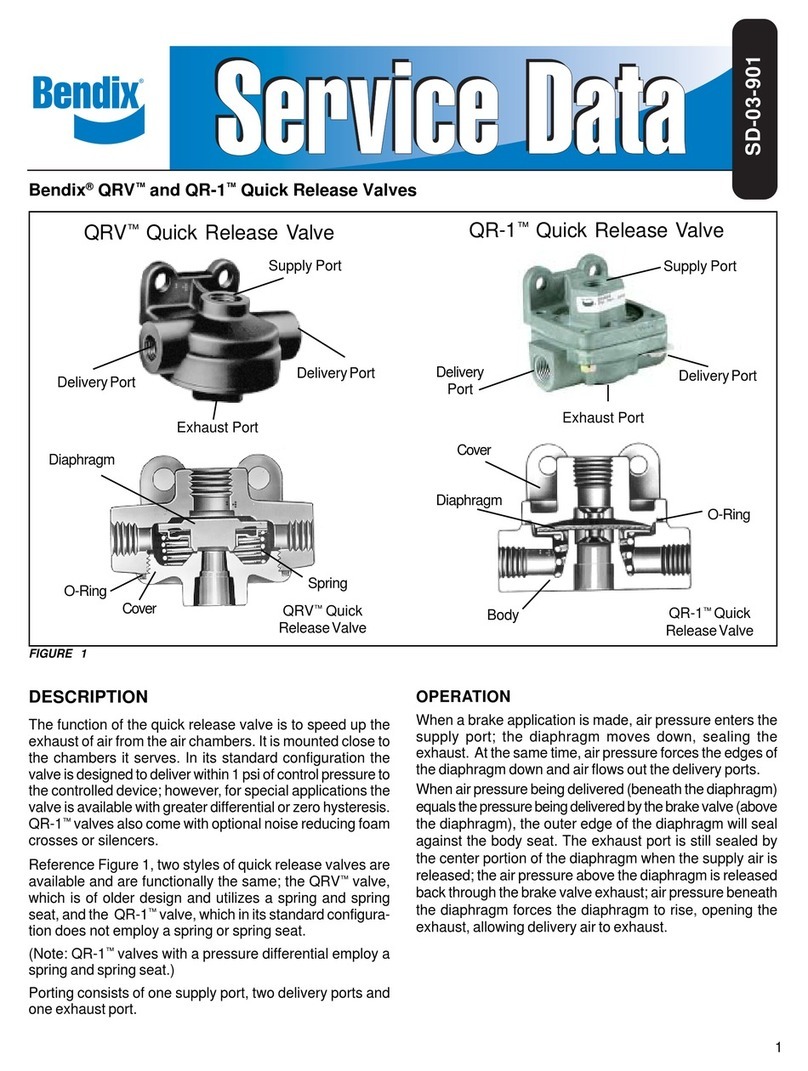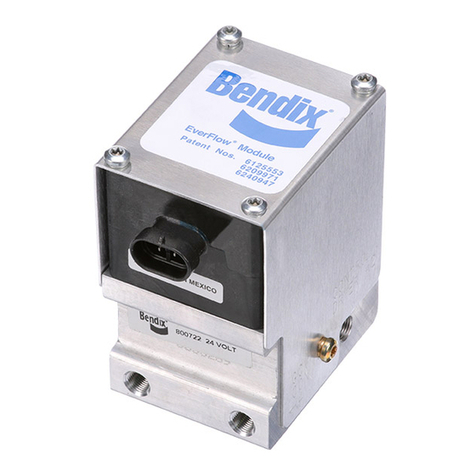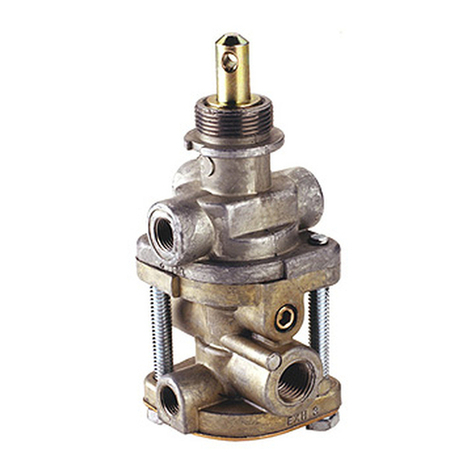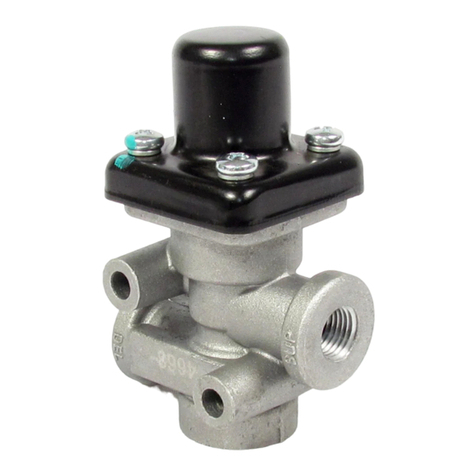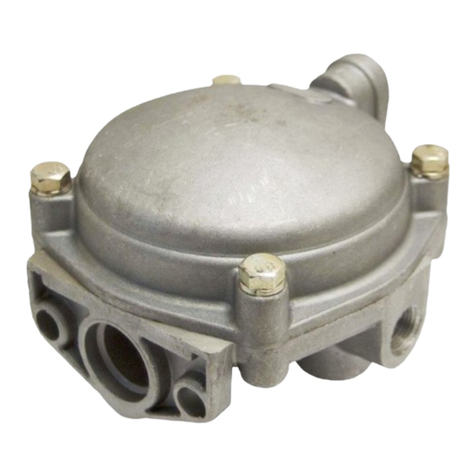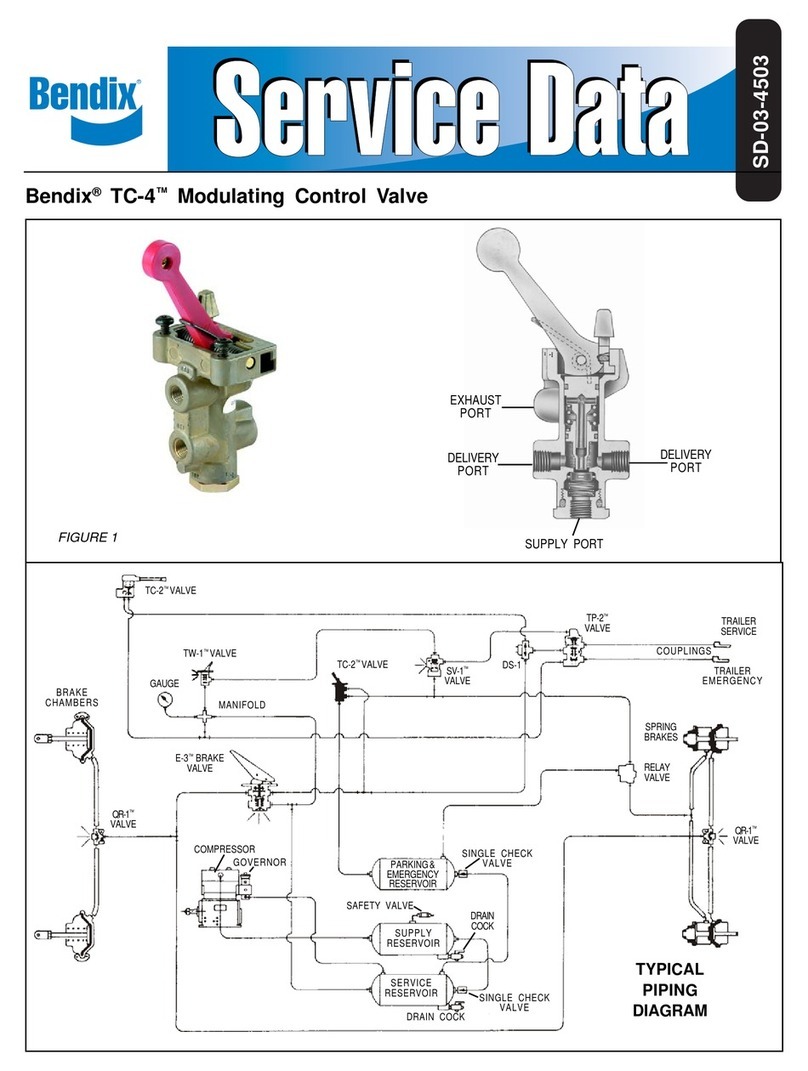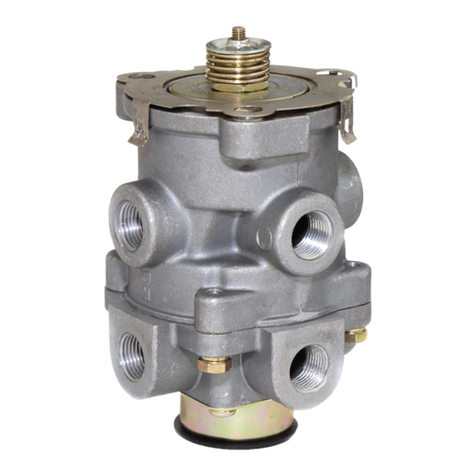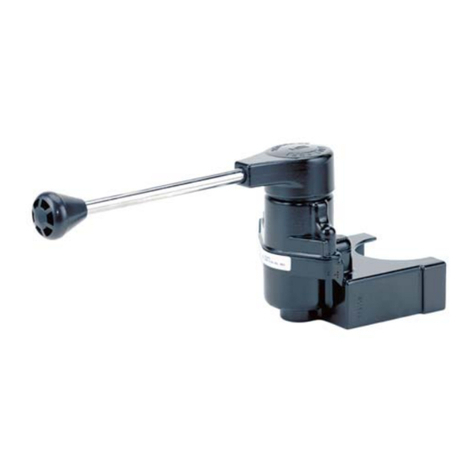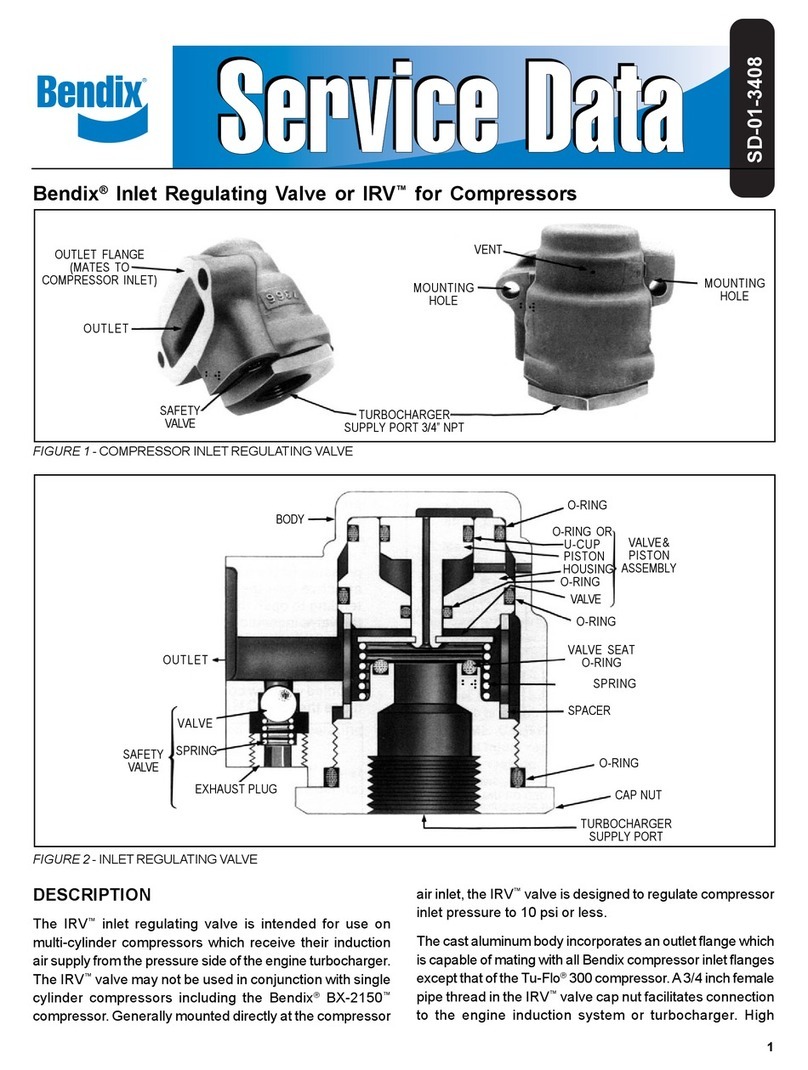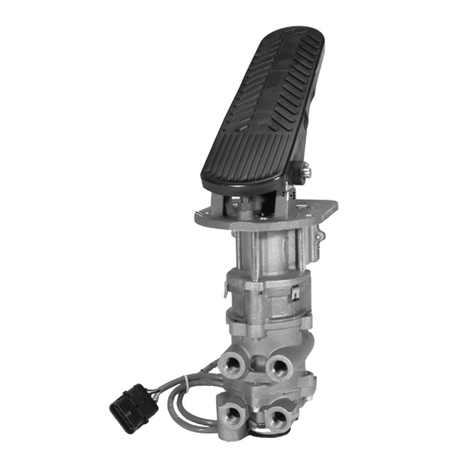
2
NOTE: If a vehicle equipped with a Bendix®DV‑2™
automatic drain valve(s) is operated in subfreezing
temperatures, it is recommended that a heated reservoir
drain valve be installed.
OPERATION
Referring to Figure 2, with no air pressure in the system,
the inlet and exhaust valves are closed. Upon charging
the system, a slight pressure opens the inlet valve (see
Figure 3) which permits air and contaminants to collect in
the sump. The inlet valve remains open when pressure is
ascending in the system until maximum (governor cut‑out)
pressure is reached. The spring action of the valve guide in
the sump cavity closes the inlet valve. The inlet valve and
the exhaust valve are now closed (as shown in Figure 4).
When reservoir pressure drops slightly (approximately 2
psi), air pressure in the sump cavity opens the exhaust
valve (see Figure 5) and allows moisture and contaminants
to be ejected from the sump cavity until pressure in the
sump cavity drops sufciently to close the exhaust valve.
The length of time the exhaust valve remains open and the
amount of moisture and contaminants ejected depends
upon the sump pressure and the reservoir pressure drop
that occurs each time air is used from the system.
Manual draining can be accomplished as follows:
• Using a tool, move the wire in the exhaust port upward,
holding it in until draining is completed.
• The thermostat on the heated model DV‑2 automatic
drain valve will activate the heating element when the
valve body reaches a temperature of approximately
45°F and will deactivate the heating element when the
valve body is warmed to approximately 85°F.
PREVENTIVE MAINTENANCE
Important: Review the Bendix Warranty Policy before
performing any intrusive maintenance procedures. A
warranty may be voided if intrusive maintenance is
performed during the warranty period.
No two vehicles operate under identical conditions, as
a result, maintenance intervals may vary. Experience is
a valuable guide in determining the best maintenance
interval for air brake system components. At a minimum,
the automatic reservoir drain valve should be inspected
every 6 months or 1500 operating hours, whichever comes
rst, for proper operation. Should the automatic reservoir
drain valve not meet the elements of the operational tests
noted in this document, further investigation and service
of the valve may be required.
GENERAL SAFETY GUIDELINES
WARNING! PLEASE READ AND
FOLLOW THESE INSTRUCTIONS
TO AVOID PERSONAL INJURY OR DEATH:
When working on or around a vehicle, the following
guidelines should be observed AT ALL TIMES:
▲Park the vehicle on a level surface, apply the parking
brakes and always block the wheels. Always wear personal
protection equipment.
▲Stop the engine and remove the ignition key when working
under or around the vehicle. When working in the engine
compartment, the engine should be shut off and the ignition
key should be removed. Where circumstances require that
the engine be in operation, EXTREME CAUTION should be
used to prevent personal injury resulting from contact with
moving, rotating, leaking, heated or electrically-charged
components.
▲Do not attempt to install, remove, disassemble or
assemble a component until you have read, and thoroughly
understand, the recommended procedures. Use only the
proper tools and observe all precautions pertaining to use
of those tools.
▲If the work is being performed on the vehicle’s air brake
system, or any auxiliary pressurized air systems, make
certain to drain the air pressure from all reservoirs before
beginning ANY work on the vehicle. If the vehicle is
equipped with a Bendix®AD-IS®air dryer system, a Bendix®
DRM™dryer reservoir module, or a Bendix® AD-9si®air
dryer, be sure to drain the purge reservoir.
▲
Following the vehicle manufacturer’s recommended
procedures, deactivate the electrical system in a manner
that safely removes all electrical power from the vehicle
.
▲Never exceed manufacturer’s recommended pressures.
▲Never connect or disconnect a hose or line containing
pressure; it may whip and/or cause hazardous airborne
dust and dirt particles. Wear eye protection. Slowly open
connections with care, and verify that no pressure is
present. Never remove a component or plug unless you are
certain all system pressure has been depleted.
▲Use only genuine Bendix®brand replacement parts,
components and kits. Replacement hardware, tubing, hose,
fittings, wiring, etc. must be of equivalent size, type and
strength as original equipment and be designed specifically
for such applications and systems.
▲Components with stripped threads or damaged parts should
be replaced rather than repaired. Do not attempt repairs
requiring machining or welding unless specifically stated
and approved by the vehicle and component manufacturer.
▲Prior to returning the vehicle to service, make certain all
components and systems are restored to their proper
operating condition.
▲For vehicles with Automatic Traction Control (ATC), the ATC
function must be disabled (ATC indicator lamp should be
ON) prior to performing any vehicle maintenance where
one or more wheels on a drive axle are lifted off the ground
and moving.
▲The power MUST be temporarily disconnected from the
radar sensor whenever any tests USING A DYNAMOMETER
are conducted on a vehicle equipped with a Bendix®
Wingman®system.
▲You should consult the vehicle manufacturer's operating
and service manuals, and any related literature, in
conjunction with the Guidelines above.
